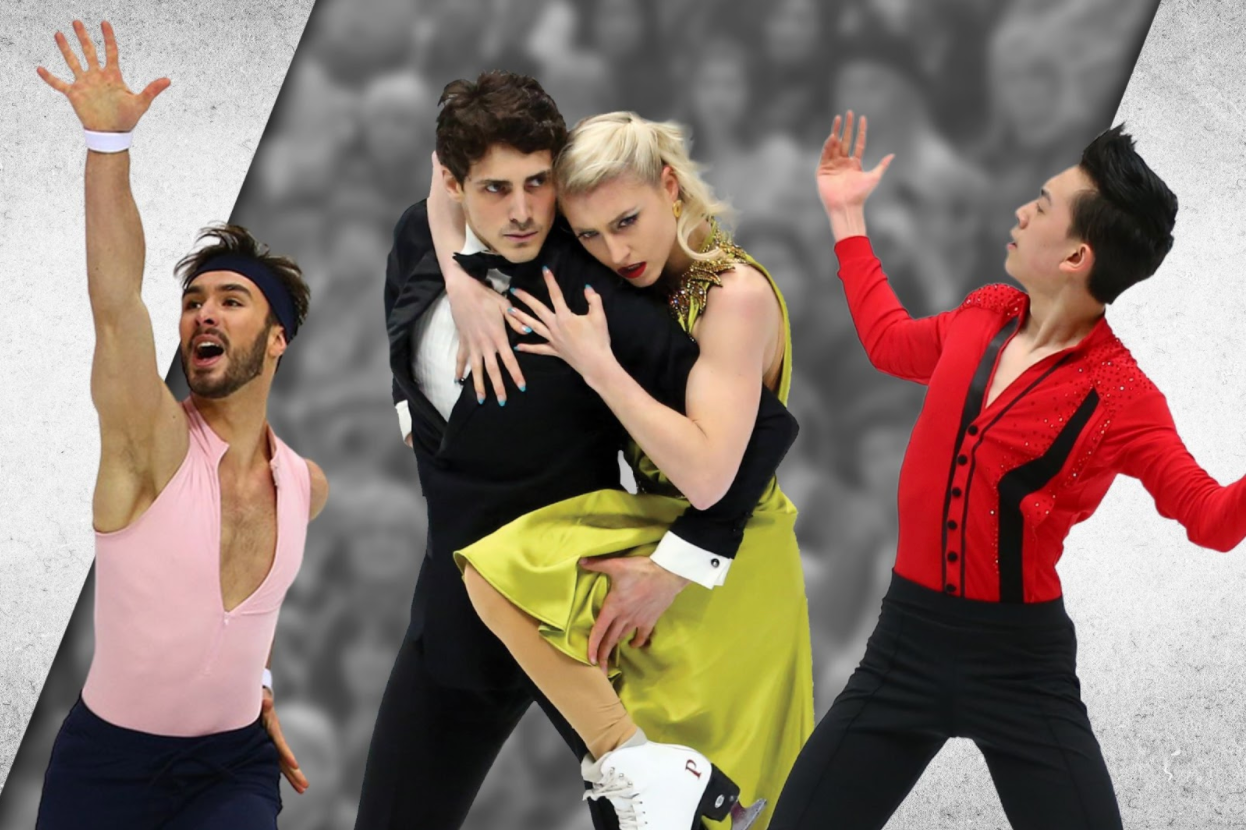Your Guide to Figure Skating at the Olympics

Every four years, figure skaters and fans around the world start to feel excited and eager to watch the Winter Olympic Games. Next season, it’s finally the time again to enjoy the hype! World top skaters such as Guillaume Cizeron, Vincent Zhou and Piper Gilles & Paul Poirier around the globe are already working hard to prepare for the exciting season. The well-trained performances, elegant, perfectly-put-together costumes, and an energy you can feel even if you aren’t there, bring many people together during this time. Over the years, figure skaters train hard hoping to make the Olympic team.
What Figure Skating Competitions Are Held at the Olympics?
Figure skating is one of the most popularly watched events at the Winter Olympics, but often fans and spectators who aren’t immersed in the sport view figure skating as one or two different events—singles and pairs. In reality, there are several different types of events that happen at the Olympics and they all make up the intricate, beautiful sport of figure skating. Let’s dive into the details of each one.
Ladies’ and Men’s Singles
Often, the first thing people imagine when they think of figure skating is one skater out on the ice performing a routine. Single skating is a discipline of figure skating in which men and women perform individually in separate disciplines. Each competition is composed of two parts which include the short program and the free skate, skated in that order.
Scoring
In singles, a skater’s form, technique, style, and ability to perform under incredible pressure become crucial to achieving the highest score possible in competition—especially at the Olympics, one of the most elite competitions in the world. Single skating programs consist of several jumps, spins, and choreographed sequences.
ISU Requirements
During their performance, a skater in these programs must perform required elements that are set by the International Skating Union (ISU). They also have a required time frame they must adhere to. Skaters are allowed to choose their own music and program themes, as well as create choreography highlighting their skill level and artistic ability. Points are given to skaters of both technical elements as well as program components, which together create the total score.
Pair Skating
The second event most people imagine when it comes to figure skating is the pairs event. Pairs skating is very similar to singles, however, skaters must skate in unison with a partner while performing specific pair skating elements such as lifts and throw jumps. Pairs skating requires you to be in perfect sync with a partner, having excellent communication throughout the routine.
Just like singles, competitions require certain elements to be included in the program, as well as a certain time limit. Additionally, elements including mirroring and shadowing are often included, displaying skaters’ strength, skill level, and teamwork.
Ice Dance
Ice dancing, similarly to pairs, is done with a partner. However, this discipline of figure skating puts more focus on the dance aspects, rather than jumps. In competition, ice dancers are required to put emphasis on rhythm, interpretation of music, and precise steps. Contrary to pair skating, there is more focus on intricate footwork in close dance holds and keeping in time with the music.
Additionally, ice dance lifts are not allowed to go above the shoulder and are not allowed to include throws and jumps. Because of these rules, this form of skating requires more creativity and innovation on the ice. Ice dancing is also composed of a short dance as well as a free dance, each requiring its own elements.
Team Event
The figure skating teams event was introduced at the Winter Olympic Games in Sochi 2014. It is a competition event in which ten qualified countries are eligible to compete as a team consisting of skaters from each discipline – ladies’ singles, men’s singles, pair skating and ice dance. The team event is usually held prior to the individual events.
First, all skaters compete in their short programs in all four disciplines. After the short programs have been completed and scored, five top countries will proceed to free skate events. Skaters earn points according to their placements at their discipline event, and those points from short programs and free skates will be counted in each country’s total score. In Sochi 2014, the Team Olympic gold medal was awarded to Team Russia, and in 2018 Pyeongchang to Team Canada.
Olympic-Level Figure Skates From Riedell
Whether you’re already an Olympic hopeful or you’re a beginner training to become an elite skater, Riedell has the figure skates for you. There’s no doubt becoming an Olympic figure skater requires serious dedication and determination. But being an Olympic-level skater also requires having Olympic-level figure skates.
At Riedell, we have a vast collection of high-quality boots and blades a skater can choose from. Beginner to professional, we have a boot and blade combination for all levels and disciplines of figure skating. From our Opal 10 and Pearl 14 as well as 133 Diamond made for beginners to our Elara and 3030 Aria for more advanced skaters, Riedell has no shortage of options.
Custom Figure Skates for Your Comfort and Performance
However, as you progress in skating and have some specific wants or needs for your skates, custom skates are the best option for ultimate customization out on the ice. Especially if you have problematic feet with some pain or uncomfort, custom-fitted figure skates help provide increased comfort out on the ice. Skates may be specifically designed to prevent injuries, reduce blisters, and thus improve overall performance.
Our master craftsmen will design and build your figure skates to exacting specifications and features, making allowances for prescription orthotics, high or low arches, toe room, foot irregularities, and so much more. Build your dream skate with Riedell. Contact us today or head to one of our authorized dealers to get started.
